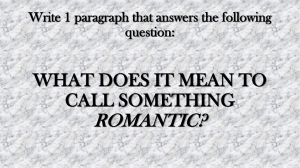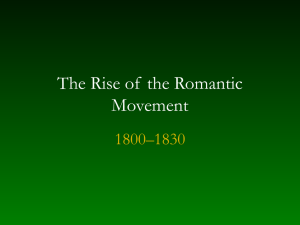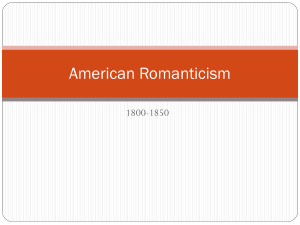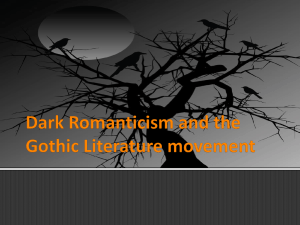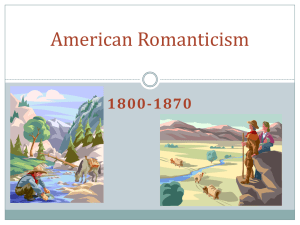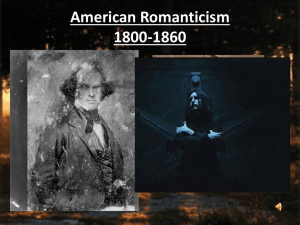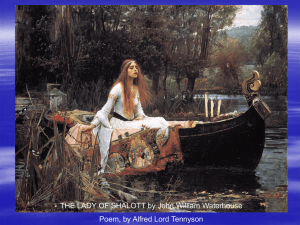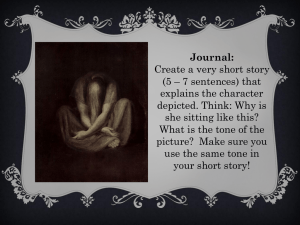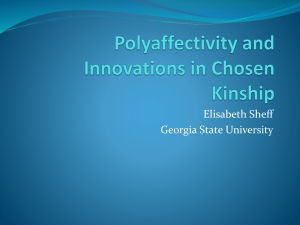File
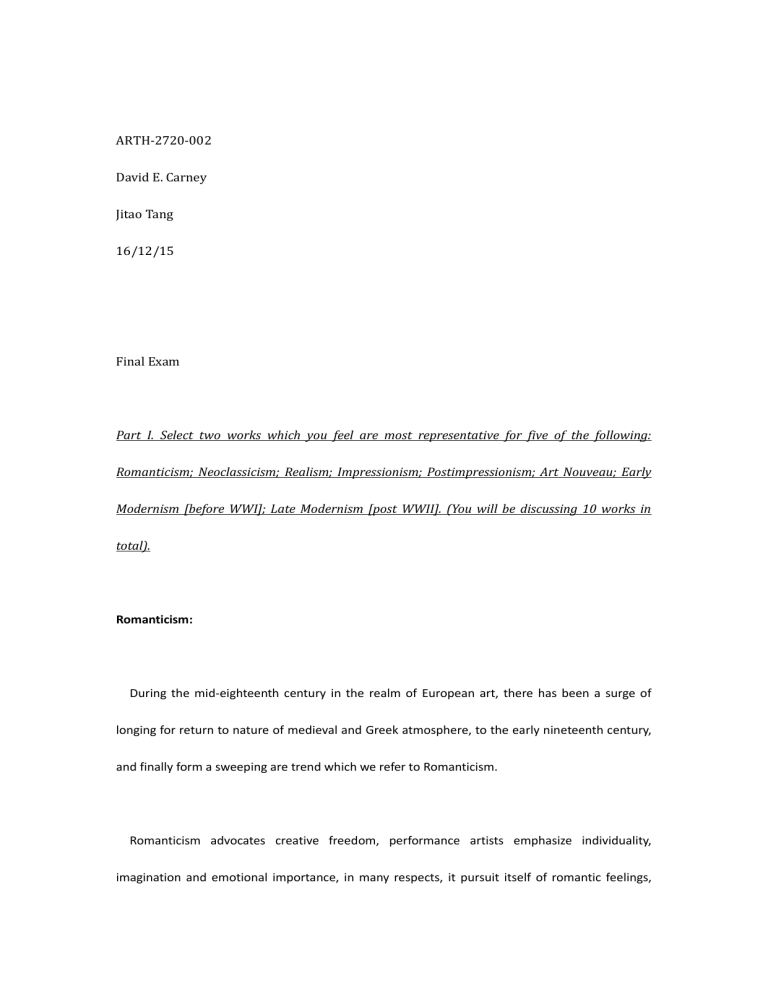
ARTH-2720-002
David E. Carney
Jitao Tang
16/12/15
Final Exam
Part I. Select two works which you feel are most representative for five of the following:
Romanticism; Neoclassicism; Realism; Impressionism; Postimpressionism; Art Nouveau; Early
Modernism [before WWI]; Late Modernism [post WWII]. (You will be discussing 10 works in total).
Romanticism:
During the mid-eighteenth century in the realm of European art, there has been a surge of longing for return to nature of medieval and Greek atmosphere, to the early nineteenth century, and finally form a sweeping are trend which we refer to Romanticism.
Romanticism advocates creative freedom, performance artists emphasize individuality, imagination and emotional importance, in many respects, it pursuit itself of romantic feelings,
beliefs, hopes and fears, in various forms of performance. Romantic painter does not emphasize the shape of sketches and rigorous but stressed that intense emotions and extreme personal performance. In the incident and behind the French Revolution and the Industrial Revolution,
Romantic movement also affected significantly. Romantic committed their view on heroic personal achievement and outreach to ideology, justified a personal artistic imagination, and as one of the most important movement, breaking the traditional definition of art.
Neoclassicism
Neoclassicism, is a new retro movement, it rise in the 18th century in Rome, and quickly expanded in Europe and America art movement, affecting many areas of decorative arts, architecture, painting, literature, theater and music. Neoclassical, one starting in Baroque and
Rococo art reactionary, on the other hand it is hoped to revive the ancient Greek and Roman art for the faith (i.e. against ornate decoration, as far as possible In frugal style based). Neoclassical artists deliberate imitation of ancient art from the style and subject matter.
Neoclassical artists do not emphasize a clear personal style, but to seek effective performance of eternal truth; At the same time, because of this neo-classical art movement and the French
Revolution are closely related, so it was also called "revolutionary classicism."
Part II. Discuss the role of nature in Romanticism and Art Nouveau. Compare and contrast a minimum of 3 works of each period with 3 works from the other to demonstrate your points.
New art movement began in the 1880s, peaked in 1890-1910. Name of the new art movement originated Samuel Bing opened a shop in Paris called La Maison Art Nouveau's, where he is on display in this style designs. This artistic movement is at the beginning of the 20th century, is located in the popular culture of the highest point of art and design.
Art Nouveau style is diverse, it lands different impact on different European countries. With the characteristics of different styles, even the name is different. "New Art," the French word for the word, France, the Netherlands, Belgium, Spain, Italy and other so named, while Germany called "Jugendstil" (Jugendstil), Vienna, Austria, called "Secession" (Secessionist ), the
Scandinavian countries are called "Arts and Crafts Movement."
Nature took big rule in the Art Nouveau. Here are four trends that Art Nouveau impressed with.
1, Emphasized craftsmanship, against industrialization;
2, Completely abandon the traditional decor, creating a new natural decor;
3, Advocating natural style, emphasizing straight and flat, the most prominent decorative curves and organic shape;
4, Influenced by oriental style, especially the Japanese Edo period decor and the influence of
Ukiyo-e
.
By looking into the design of Architecture, we can find the influence of Art Nouveau in below
examples. In the design of Casa Mila, the front of the building is treated as a series of horizontal undulating lines, thus making high drape multi-storey buildings with a surface level fluctuation glorified. Apartments not only external wavy, internal nor right angles, including furniture, try to avoid the use of straight lines and planes. Its' natural style was shown in a stylistic way with modernism.
In the same period, Barbizon School of French Romantic painting is steering a realistic starting point form romanticism to modernism. "Gleaners" (Des glaneuses) is a French Barbizon School painter Jean - Francois Millet, one of the most famous works, the painting depicts three peasant woman in golden wheat field wheat scene to pick up, its golden sunshine , bending and other details, and the screen can be seen far farmland supervisor sitting on horseback watch, reflecting the wealth gap was produced by capitalism. With its' naturalistic style and romantic content, the sense of nature was capture.
Antoni Gaudi, the Spanish "Catalan Modernism," the architect for the new art movement and the most important one representative figure. Gaudi's most creative design is Casa Batllo, a apartment house which its appearance details the representation of ocean marine animals. At first glance the entire building to make people feel full of flavor innovation.
Romanticism and nature are highly related because the art of the romantic period emphasized the glory and beauty of nature. Joseph Mallord William Turner, English Romantic landscape painter, watercolorist and printmaker, his work had considerable influence on the development
of post-impressionist paintings. Turner made an outstanding contribution to the field of landscape, he improved the aesthetic quality of the landscape, to form a romantic painting language by combine the hazy picture and explore the multi-faceted expression.
William Morris, one of the most influential pioneer of The Arts & Crafts Movement, he greatly emphasis the consistent and coordination in terms of decorative and structural factors, for which he abandoned passively attached to the existing structure of the traditional decorative patterns, and strongly advocate the use of natural theme, created from natural forms, smooth lines procedural aspect patterns and refining plant, the new artistic designers whom puts this process into the extreme expression.
Wanderer above the Sea of Fog, also known as Wanderer Above the Mist, is an oil painting composed in 1818 by the German Romantic artist Caspar David Friedrich. In this painting, the natural scenery is rendered into a symbol of detachment, pursue of great ideals. The role of nature in the romantic movement among contemporaries are thereby used for contrast the theme.
To sum up the contrast, Art Nouveau in architecture and crafts design which used the natural beauty of the importance of appearance and naturalness, but in romantic paintings, nature concept was sublime and its personality has become a metaphor for peace and harmony, which set off the theme of romantic painting meaning.
